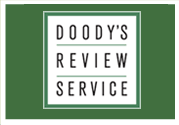Medical librarians make it their mission and responsibility to provide users the best in biomedical information resources to support teaching, patient care, research, and scholarship. Since 2002, 21 new MD programs in the United States have received accreditation status from the Liaison Committee on Medical Education (LCME). The born-digital concept also is relatively new to health sciences libraries.[1] The first born-digital health sciences library was created at Florida State University (FSU); other new libraries have followed FSU's lead, developing all-digital collections.[2]
As the founding librarian at Western Michigan University Homer Stryker M.D. School of Medicine (WMed) Library -- a born-digital library established in 2013 – I was faced with the challenging task of building a biomedical collection from scratch. Many born-digital health sciences libraries must deal with significantly reduced space, coupled with a lack of print and electronic legacy collections.
When the space and collection do not resemble a traditional library, marketing library resources becomes imperative. What users and administrators cannot see, the born-digital library needs to describe through promotion. Librarians may cultivate digital library champions using social media and word of mouth, and by scheduling events in the library space. Developing a promotional strategy or marketing plan is imperative for born-digital librarians to actively promote the existence of library collections.[3] For example, users often do not start on the library’s website and they can’t peruse a print collection because there is none.
The primary users of the born-digital library access its collections using applications on mobile devices. The library is what is in the user’s hand, and it needs to be accessible from anywhere, any time, on any device. Users increasingly rely on their handheld devices for answers and prefer bite-size chunks of information. The born-digital library’s systems, applications, and web pages need to be agile enough to accommodate a variety of information needs.
Many health sciences book titles are sold in packages or subject collections. Publishers and aggregators offer different pricing and access models to fit the needs of various library customers. To fit the needs of our small medical school size and budget, we rely heavily on demand-driven systems to acquire new book titles. The advent of demand-driven systems has made it easier to add electronic book titles to a collection, but with that choice often comes content that might not necessarily be appropriate for the library’s collection.
The WMed Library’s electronic book collection has access to over 35,000 titles published in the health and biological sciences. The library staff uses the Doody’s Core Titles (DCT) list as an authoritative source to identify recommended works to be added to its demand-driven system. It also uses the DCT list to vet materials. As librarians, we are taught to build large book collections. As we shift from purchasing titles to collections, libraries are increasing in size at a faster pace. We’re not selecting the titles as much as we're shifting responsibility to the publisher or aggregator and the end user in a demand-driven environment. Lately, I have been rethinking the size of my library’s electronic book collection. I've always taken in entirety titles in a bundle, even when I knew a few were out of scope. As a born-digital library, it’s relatively easy to launch a health sciences electronic book collection using an open link resolver platform and deploying collections using a demand-driven system. However, after growing the library’s demand-driven system to 165,000 book titles, it is obvious that having more access to titles is not always advantageous -- it produces too many esoteric results with a library’s discovery tool. Through experimentation, we began deselecting content and focusing on building a user-driven core collection. This will be the library’s first electronic weeding project and its goal is to provide a well-defined electronic collection that produces more relevant results.
References
1. Shearer BS, Klatt C, Nagy SP. Development of a new academic digital library: a study of usage data of a core medical electronic journal collection. J Med Libr Assoc. 2009 Apr;97 (2):93–101.
2. Dexter, N. & Lorbeer E.R. (2016). “Born Digital”: A Tale of New and Developing Health Sciences Libraries. MLA News. 56(1), 12.
3. Schmidt J. Promoting library services in a google world. Library Management. 2007;28 (6):337-346.
